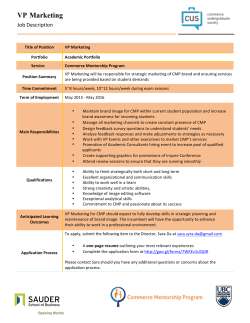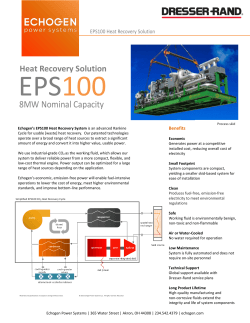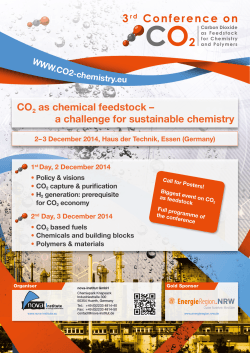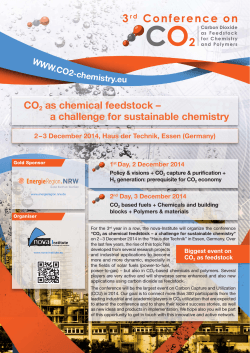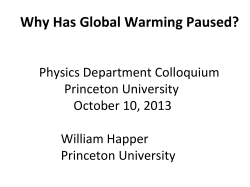
The Sleipner CCS experience Olav Skalmeraas, Vice President CCS Statoil ASA, Norway
The Sleipner CCS experience Olav Skalmeraas, Vice President CCS Statoil ASA, Norway UNFCCC - Bonn, October 21, 2014 18 years of successful CCS operations at Sleipner CO2 storage is feasible and safe Sleipner CCS project overview • Sleipner gas/condensate field • Amine capture from natural gas 15 Mt CO2 injected since 1996 • 0.9 Mtpa CO2 stored • 15Mt stored by end 2014 • Injection started in Sept. 1996 • CO2 is injected in the Utsira Fm at ~ 900 m depth (above the condensate reservoir) • From April 2014 CO2 from Gudrun field gas (north of Sleipner) is also injected 9% CO2 in the gas from Sleipner Vest Main achievements • Significant contribution to Norway’s emissions reductions • Important learnings for science and technology of CO2 capture, transport and storage • Used to pioneer and demonstrate a range of monitoring technologies: − Time-lapse seismic − Gravity monitoring − Seabed mapping Accumulated CO2 [Mt] Injection and monitoring history 14 12 10 Seismic surveys Gravity surveys 8 6 Seafloor mapping CSEM survey 4 2 0 1994 1996 1998 2000 2002 2004 2006 2008 2010 2012 2014 Year CO2 plume - 4D seismic 2001-1994 2004-1994 2006-1994 2008-1994 2010-1994 High Low Seismic time-lapse monitoring shows that CO2 stays in place in the Utsira Fm at Sleipner and gives a detailed description of where the CO 2 is Regulatory framework and knowledge building • Project permitted under Norwegian Petroleum law • Other relevant conventions − OSPAR − EU CCS Directive • External interest – data sharing and technical clarifications • Geophysical monitoring – improved understanding of CO2 flow behaviour and storage capacity • Experience on how much and what monitoring data is needed for CO2 storage sites in general EU CCS Directive • Implementation may impose some additional requirements − Increased requirements on future monitoring plan − Liabilities • Long term liabilities after injection stop • Financial security for leakage risk Key learnings • Operational and monitoring experiences − Geophysical monitoring has proven essential for site management − Monitoring of pressures is as important as saturation − Practical learnings about capacity and injectivity from well operations experience − Monitoring the overburden is as important as the reservoir − Time-lapse seismic imaging of CO2 plume development gives much improved understanding of flow processes • Well defined governmental framework and regulations have contributed to the stable and predictable operation Presented by Olav Skalmeraas, Statoil ASA www.statoil.com
© Copyright 2025
